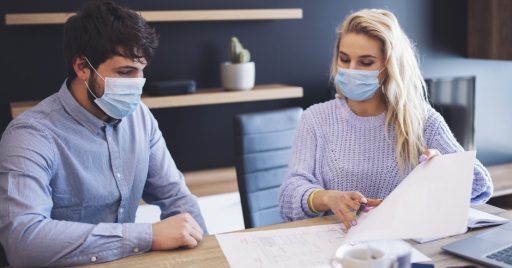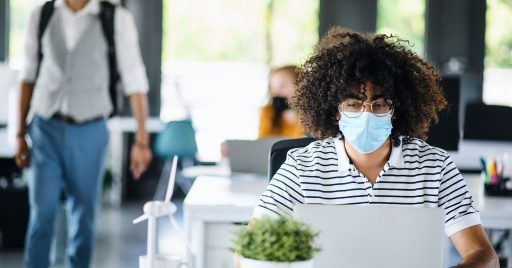The covid-19 pandemic has changed all workplaces. Many jobs have become remote work since the pandemic broke out, though many employees must still be present in factories, construction sites, and offices. Besides remote working that seems will not change so much even after the pandemic, the other noticeable changes are wearing masks, checking temperature in the company entrance, and using sanitations more frequently.
All businesses in which their workers must attend, implement first a return to work plan to avoid virus transmissions and protect workers. However, this plan can be varied based on different jobs and companies. One of the jobs in which the covid-19 transmission risk is high is an office job despite what most people think.
A coronavirus office safety guide can help organizations follow the health recommendation and protect their employees from exposure to the covid-19.
Essential tips- A guide to work in the office during the covid-19 pandemic
You can follow these tips to keep the germs out of your workplace and avoid virus transmission:
- Educate your staff on the disease signs.
- Use covid-19 safety signs to inform people
- Limit business travel
- Discourage handshaking
- Suspend office meeting as much as possible
Besides these tips, some significant measures must be implemented that we talk about them below
Physical distancing- A guide to work in the office during the covid-19 pandemic
The primary key to avoid virus transmission is maintaining physical distancing. The minimum safe distance between people is 6 feet or 2 meters. On the other hand, according to WHO, crowd density in every building should be less than one person in every 10 square meters.
Therefore, you must limit the capacity of areas in the workplace and even change places’ design. You can also use floor tapes or paint marks to remind customers, visitors, and workers to keep a safe distance from others.
Besides mentioned measures, another effective solution is employing VEUNEX in your workplace. It is a real-time video surveillance technology based on artificial intelligence that identifies workplace hazards like inadequate distancing from others. VEUNEX can also monitor the number of people in different places. For instance, when the elevator’s safe capacity is two persons, VEUNEX can prevent the elevator from moving and alert overcapacity if three people get into it.

Face mask- A guide to work in the office during the covid-19 pandemic
Wearing a face mask correctly can effectively mitigate the covid-19 transmission, especially in small buildings. A face mask worn over the mouth and nose can reduce the spray of droplets and prevent the transmission of Covid-19. Therefore, wearing a face mask in the workplace for both employees and customers/visitors is mandatory in many companies. However, some people cannot wear a face mask due to health conditions, religious observance, or other reasons. Employers must also consider those situations and find reasonable accommodations for such employees. For example, employers may reassign seating positions so that such employees are not near other employees or allow them to work from home, if possible.
You should also consider a proper response to those who refuse to wear masks. It would be better to have a strategy in place to protect your employees from customers who refuse to wear masks, including through visible notices underlining the requirements and the right to refuse service to customers who do not comply.

Cleaning and disinfection- A guide to work in the office during the covid-19 pandemic
Contaminated objects or surfaces can also spread coronavirus then a cleaning and disinfection plan must be implemented frequently. Desks and workstations, doorknobs, telephones, keyboards, working objects, and surfaces that are touched frequently should be cleaned more often.
Common areas, especially toilets, should be cleaned even more. After all, it would be better for employers to promote a regular cleaning culture, and depending on specific operations, hiring cleaning and disinfecting services.
Employers must provide staff, customers, and visitors with ample and easily accessible places to wash their hands with soap and water or disinfect their hands with sanitizers. Sanitizing hand-rub dispensers must be put in prominent places around the workplace, and it must be assured that they are regularly refilled.
Besides all mentioned measures, employers must also improve exhaust ventilation and increase the supply of clean make-up air in rooms and operations with a high risk of exposure to the virus. In the end, it would be worthy if we say that businesses must adapt their operations to the new environment and reinforce safety and health to keep going and survive.